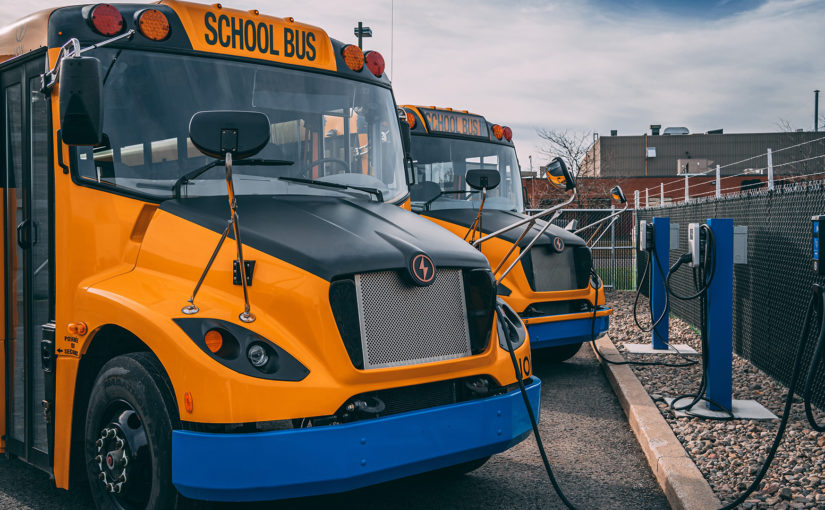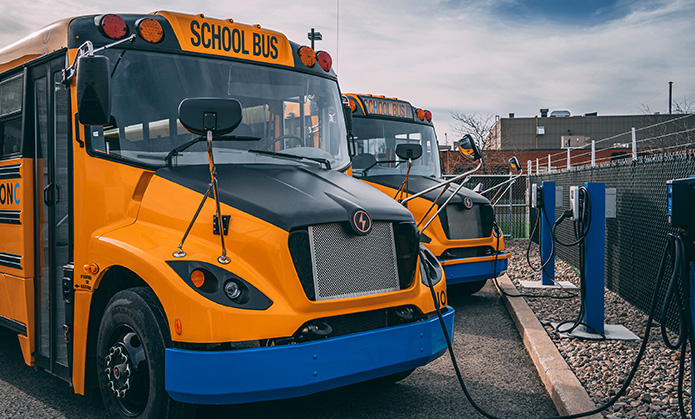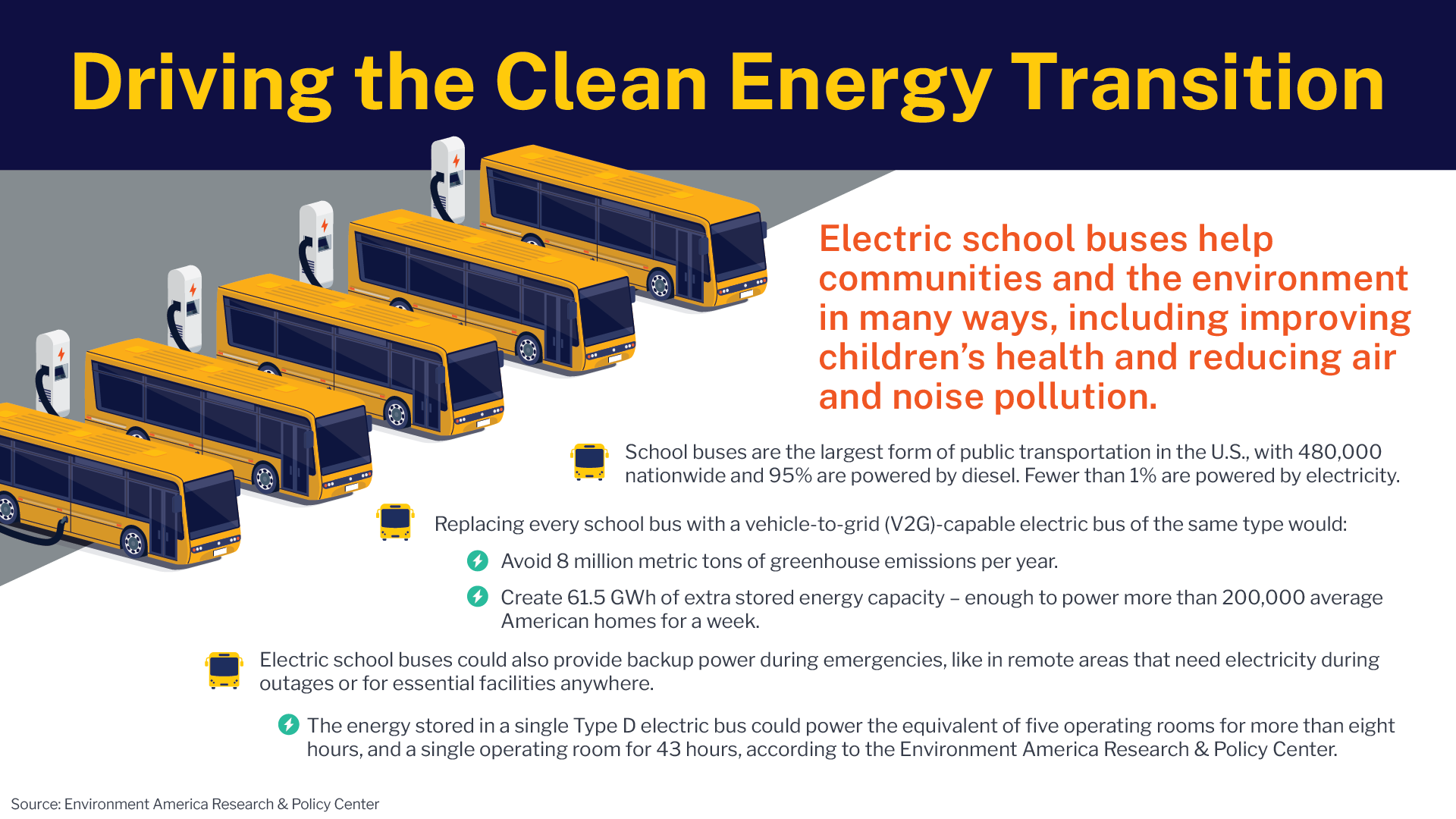CPower Ready To Help School Districts Unlock Full Value of Electric School Buses Through Federal Rebate Program


Photo Credit: Lion Electric
School districts have three months to buy almost $1 billion of clean school buses and infrastructure with federal rebates. Districts will then turn their attention to receiving their electric or alternatively-fueled buses and installing infrastructure — and CPower can help.
CPower helps districts with electric buses reduce their electrification costs, increase their communities’ resiliency and green the grid, through partnerships with EV fleet owners, charging operators and schools across the country.
The U.S. Environmental Protection Agency’s $5 billion Clean School Bus Program, a five-year program, is accelerating the greening of fleets through electrification. In its first round of funding, the EPA awarded a total of $948.8 million in 2022 Clean School Bus rebates to 403 applicants in October.
Selectees have until April 28 to submit payment request forms for eligible zero-emission and low-emission buses and infrastructure to the EPA. The EPA expects the 2022 rebate program to fund approximately 2,500 school bus replacements. Funds come from one of two separate pools, one for Zero-Emission (ZE) Buses and one for Clean School Buses, which can include alternatively-fueled buses in addition to electric buses.
Transitioning to electric school buses helps communities and the environment in many ways, including improving children’s health and reducing air and noise pollution, according to the Environment America Research & Policy Center. Electric school buses equipped with vehicle-to-grid (V2G) technology that enables them to deliver power to buildings and back to the grid provide additional benefits as well.

The Environment America Research & Policy Center notes:
-
- School buses are the largest form of public transportation in the U.S., with 480,000 nationwide and 95% are powered by diesel. Fewer than 1% are powered by electricity.
- Replacing every school bus with a V2G-capable electric bus of the same type would:
-
- Avoid 8 million metric tons of greenhouse emissions per year.
- Create 61.5 GWh of extra stored energy capacity – enough to power more than 200,000 average American homes for a week.
-
- Electric school buses could also provide backup power during emergencies, like in remote areas that need electricity during outages or for essential facilities anywhere. For example, the energy stored in a single Type D electric bus could power the equivalent of five operating rooms for more than eight hours, and a single operating room for 43 hours, according to the Environment America Research & Policy Center.
Though the V2G technology that the Environment America Research & Policy Center advocates for is still in its infancy, researchers note, removing adoption barriers through means such as policy changes and program funding could facilitate the transition to electric school buses by making investments in buses and infrastructure financially feasible for districts. The EPA’s Clean School Bus Program is a step forward in that regard, helping to roll out thousands of cleaner, quieter electric school buses in districts nationwide.
Districts have also pushed ahead independently. For example, CPower is turning the country’s largest electric school bus fleet into grid-ready resources by partnering with Highland Electric Fleets and Maryland’s Montgomery County Public Schools (MCPS).
MCPS notes the partnership will deliver cleaner, healthier transportation for students and communities while supporting grid reliability through demand response solutions. Together, the partners will use MCPS’s fleet of EV school buses (EVSBs) to provide grid services and increase reliability for PJM, the largest grid operator in the U.S.
Because school buses run on a consistent daily schedule, electric buses such as those that Highland provides to MCPS are ideal resources to provide grid resiliency services. CPower will ensure that buses are fully charged and ready to run while also allowing Highland to reduce electrical loads when needed, thereby helping to keep the grid in balance.
CPower similarly helps grid operators balance energy demand and supply through a partnership with bp pulse for fleets (formerly AMPLY), which provides fully managed charging services to public sector and commercial businesses with EV fleets. The partnership also drives new revenue opportunities for fleets while offering transmission and distribution grids the flexibility to integrate V2G-ready EV chargers as distributed energy resources (DERs). The Logan Bus Company, the largest school bus provider for the New York City Department of Education, is the first project to leverage this partnership.
As the national leader for grid balancing and reliability solutions, CPower is helping to create a Customer-Powered Grid™ that will enable a flexible, clean and dependable energy future. Helping school districts transition to electric school buses helps bring that future to fruition.
For more information on how we can help your school district unlock the value of your EV school bus fleet to drive energy flexibility, grid reliability and revenue opportunities, call us at 844-276-9371 or visit CPowerEnergy.com/contact to find out.
Brad Widdup
Brad is Director, Distributed Generation at CPower. His 25 years in the energy industry include serving as regional vice president for Oracle’s Utilities Global Business Unit.


